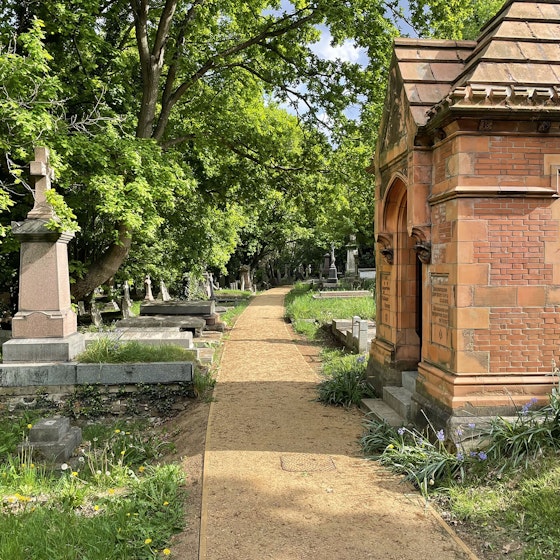
Curtins delivered civil engineering solutions for the refurbishment of West Norwood Cemetery, tackling drainage and subsidence issues threatening listed heritage structures.
Curtins delivered civil engineering solutions for the refurbishment of West Norwood Cemetery, tackling drainage and subsidence issues threatening listed heritage structures.
Arts & Culture - The South, England
Curtins were appointed to undertake civil engineering services for the lottery funded refurbishment of West Norwood Cemetery. The site, first used for burials in the 1700s, contains 69 Grade II listed and Grade II* listed structures. It is known as one of the famous “Magnificent Seven” cemeteries of London.
As part of a wider refurbishment scheme with Sir Donald Insall Architects, we led on the external civil engineering package of works. Due to the age and condition of the site, there were numerous factors that were ultimately affecting the condition of some of the listed structures, with a number being placed on the Heritage at Risk register. Ground subsidence and movement of the underlying London Clay led to degradation of the drainage network and local footpath and highway network.
Our role was to review these issues and develop a robust solution within a claustrophobic, constrained, and historically significant site that was required to remain open throughout construction. In addition to the conservation and archaeological constraints, the local topography presented significant challenges for the design and construction, with a 20m fall from south to north and four Thames Water sewers running beneath the site.
We overcame these issues by developing a porous foundation design that utilised the required highway sub-base depth for surface water management and storage. This approach enabled shallow excavations restricted to the footpath widths and existing depths, thereby minimising temporary works and reducing the impact on the surrounding archaeology and monuments. At the same time, it effectively managed and attenuated surface water flows and flooding, previously a major operational issue and a key cause of longstanding damage to heritage assets.
Ground subsidence and movement of London Clay had severely degraded the drainage and footpath networks, threatening listed heritage structures within a constrained and historically sensitive site.
Curtins developed a porous foundation design that enabled shallow excavations for surface water management, minimising disruption and protecting archaeological assets while effectively mitigating flooding and structural damage.
Let’s talk about your next project and how our experienced team can help
Find your nearest Curtins office
Contact